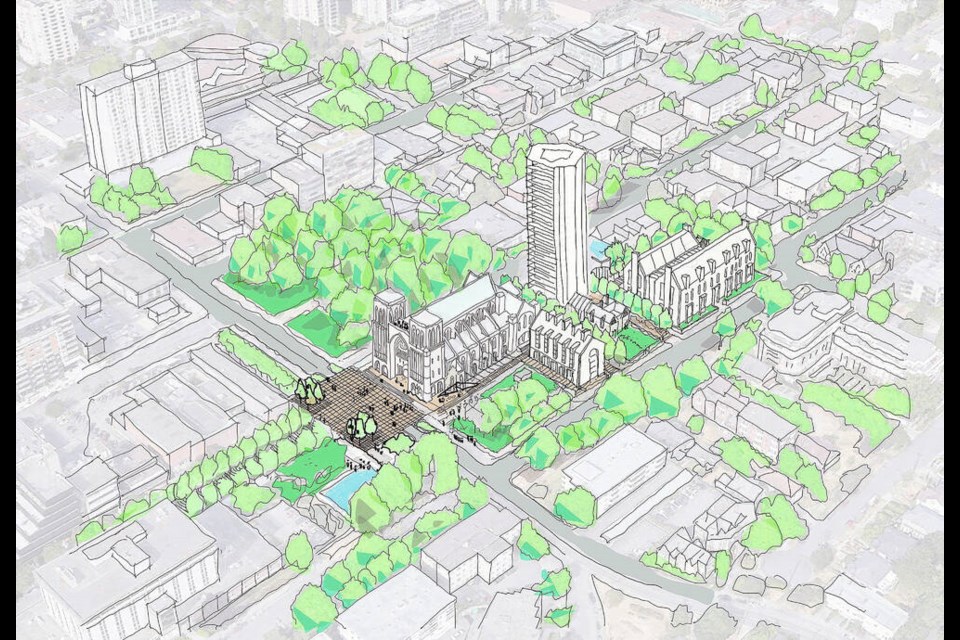Victoria's Christ Church Cathedral could eventually host up to 500 residential units in six buildings as part of a multi-year redevelopment plan.
An application to rezone the city block where the nearly 94-year-old edifice sits — bordered by Quadra and Vancouver streets and Burdett and Rockland avenues — to allow residential and other uses on the 1.4-hectare site is expected to be submitted to the City of Victoria early next year.
The goal is to ensure the cathedral’s long-term viability, and help pay for needed investment in existing buildings on the property, said Bishop Anna Greenwood-Lee of the Anglican Diocese of B.C.
“The cathedral is coming up on being 100 years old,” Greenwood-Lee said. “The Memorial Hall, the other large building on the site that has historic designation, just celebrated its 100th anniversary this year and old buildings need work. Eventually buildings come to the end of a lifespan and need an upgrade.”
Seismic work on the cathedral is estimated to cost about $30 million, with another $20 million identified in upgrades and renovations in the building and on site.
“When you’re starting to look at figures that large, you’re going to have to bring in some other income,” Greenwood-Lee said, noting the site is large enough to handle development of income-generating property while maintaining the existing green space.
“We’re really excited by this plan, as we think that it enables the cathedral to be even more porous to the community, to get more people on the site, more people enjoying the building, make the building more usable for more user groups, and at the same time add much needed housing to the city of Victoria.”
No shovels are expected to hit the dirt for at least four or five years, but documents filed with the City of Victoria show several new buildings with at least one large residential tower.
Kaeley Wiseman, principal of Wiser Projects, which has been working with the church for the past three years on the project, said plenty of factors will shape the final build-out of the precinct.
She said there will likely be six buildings established over 15 to 20 years in two or three phases, with the buildings ranging between six and eight storeys and one 18-storey tower.
As many as 500 residential units could be on the site, meaning up to 1,500 residents. But much can change before construction starts, she said.
The intention is to enter into a master development agreement that ensures certain things will be part of the project, while leaving a lot of flexibility for the developers, Wiseman said.
“We’re just going for a rezoning and not a development permit at this time,” she said. “This is going to be realized in different phases and we want as much flexibility as possible, not just for our development partners, but also in 15 years or 25 years, the community needs might have changed.”
For example, Wiseman noted that for the past 10 years, everyone has been talking about rental projects, but now in a high-interest-rate environment, developers are back to considering condominiums.
“So it’s about baking in some flexibility while giving the neighbourhood some certainty,” she said.
Wiseman said they are hoping to be through the rezoning process in 18 months, at which point they will start talking to potential development partners.
She said the first phase of development would be a residential building and likely an amenity building for the community, noting the goal is to build first on existing parking lots before considering other parts of the site.
And as money flows from those early projects, work will begin to upgrade the cathedral and other buildings to add more washroom facilities, improve accessibility and establish things like a commercial kitchen for weddings and other events, and meeting spaces.
Wiseman said the church is seen as a civic space, often rented by local groups and is used as a concert venue.
Greenwood-Lee called the cathedral a destination for tourism, arts, worship and learning. “It’s the city’s cathedral and we’d like it to remain that way as much as possible.”



